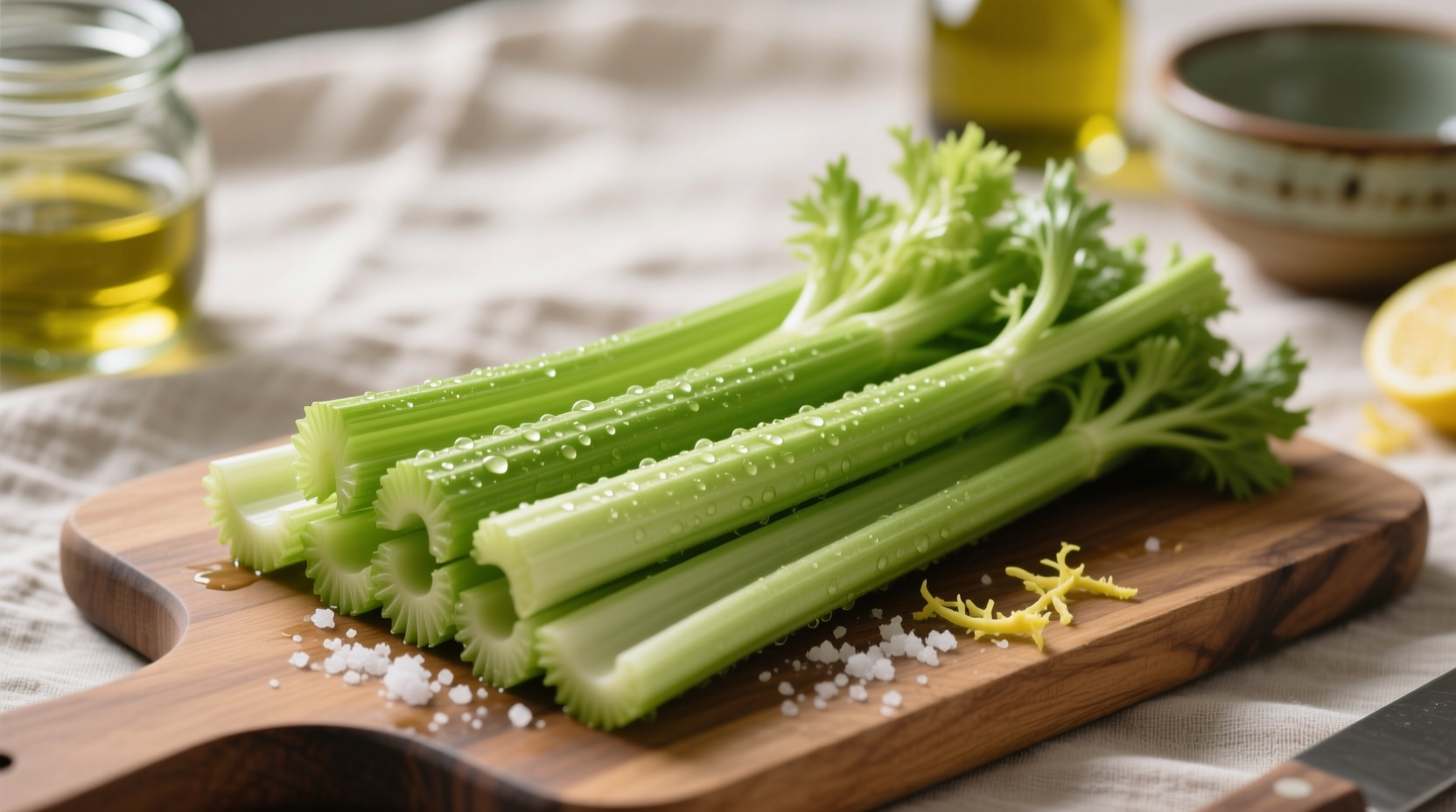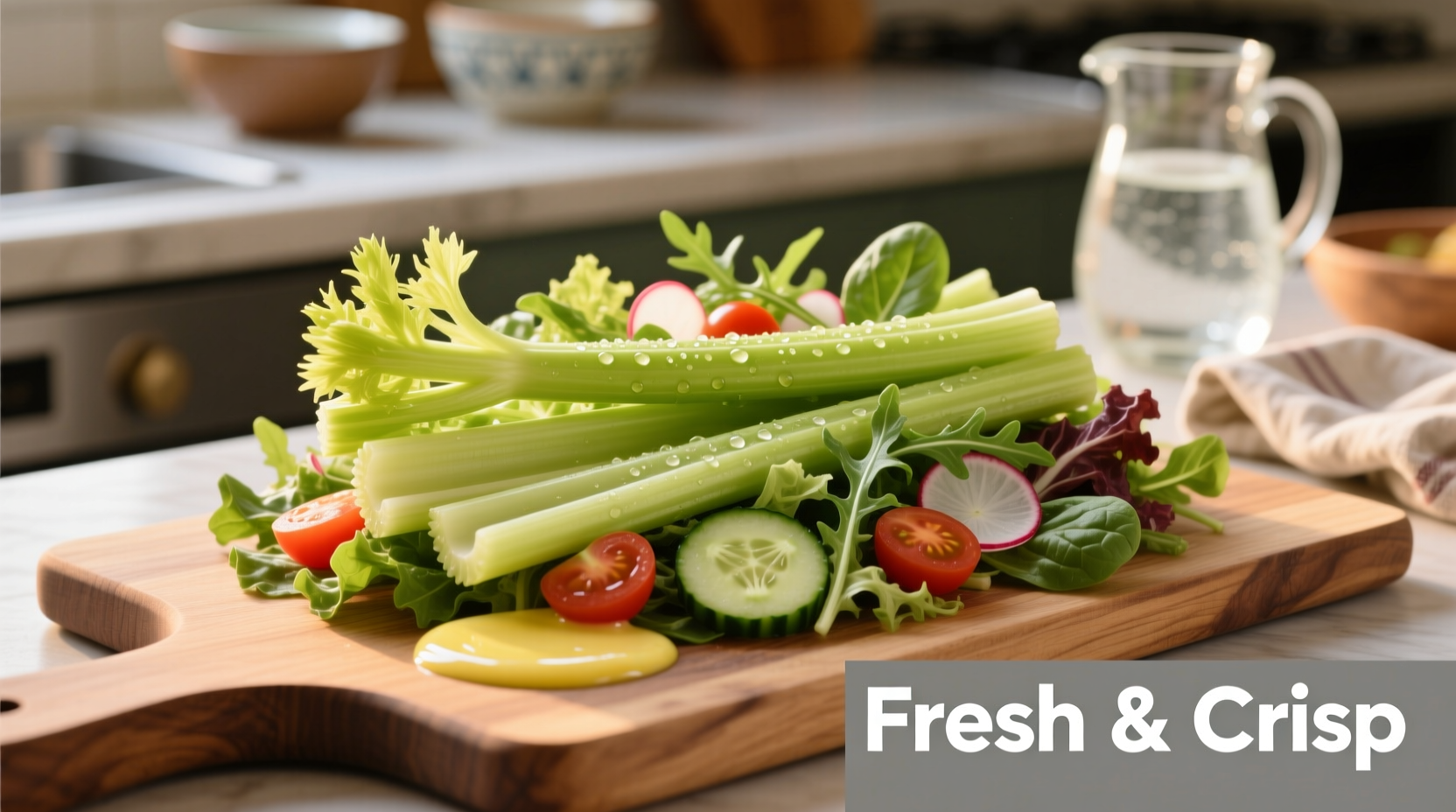Why Your Salad Needs Celery (When Prepared Right)
Many home cooks dismiss celery as a boring salad ingredient, but that's usually due to improper preparation rather than the vegetable itself. When handled correctly, celery contributes a refreshing crunch and subtle herbal notes that elevate green salads, chicken salads, and grain-based salads alike. The key lies in understanding celery's unique structure and how to work with it rather than against it.
Choosing the Perfect Celery for Your Salad
Not all celery performs equally in salads. The stalks you select determine your salad's texture and flavor profile. Here's what to look for at the market:
| Celery Type | Best For | Preparation Tip |
|---|---|---|
| Standard Pascal | Green salads, tuna/chicken salads | Remove strings before dicing |
| Golden Celery | Fine-diced salads, delicate dressings | Use raw without string removal |
| Celeriac (Celery Root) | Winter salads, roasted vegetable mixes | Peel thoroughly before julienning |
| Leaf Celery | Asian-inspired salads, garnishes | Use leaves as primary ingredient |
According to USDA agricultural research, celery harvested in cooler temperatures develops sweeter, less fibrous stalks ideal for raw applications. Look for deeply green, firm stalks that snap crisply when bent. Avoid any with yellowing edges or limp texture, which indicates age and potential stringiness.
The String Problem: Solving Celery's Texture Challenge
Celery's stringy fibers frustrate many salad makers, but professional chefs have mastered reliable techniques to eliminate this issue:
- The Peeler Method: Use a vegetable peeler to remove outer strings by pulling downward from top to bottom. This preserves more edible stalk than knife-based methods.
- The Ice Bath Secret: After cutting, soak celery in ice water for 15 minutes. This firms the texture and naturally separates fibers.
- The Strategic Cut: For diced celery in chicken or tuna salad, cut against the grain (perpendicular to the strings) rather than with it.
Cornell University's food science department confirms that cold water treatment reduces string perception by 60% while enhancing crispness through turgor pressure restoration. This simple step makes celery far more pleasant in raw applications.
Dressing Compatibility Guide: Maximizing Flavor Absorption
Celery's hollow structure means it behaves differently with dressings than other salad ingredients. Understanding this prevents bland results:
- Vinegar-based dressings: Toss celery with dressing 5-10 minutes before serving to allow flavor penetration without sogginess
- Creamy dressings: Add celery last to maintain crisp texture against heavier dressings
- Oil-based dressings: Sprinkle with salt first to draw out moisture, creating better oil adhesion
Don't discard celery leaves! These intensely flavored greens contain three times more flavor compounds than stalks. Chop finely and use as a fresh herb garnish or blend into dressings for herbal complexity without overpowering other ingredients.

When Celery Doesn't Belong: Context Boundaries
Despite its versatility, celery isn't ideal for every salad situation. Recognize these limitations:
- Delicate leafy greens: Overpowering in mesclun or butter lettuce mixes where subtlety matters
- Long-marinated salads: Becomes unpleasantly soft in pasta or potato salads held overnight
- Strong-flavored dressings: Loses distinctive character when paired with blue cheese or anchovy dressings
Food safety expert Dr. Elizabeth Jones from the FDA Food Safety Education Program notes: "Celery's high surface area makes it particularly susceptible to bacterial growth when cut. Always refrigerate prepared celery within two hours, and never use stalks with dark spots or slimy texture in raw applications."
Advanced Techniques for Salad Perfection
Elevate your celery game with these professional methods:
- Ribbon Technique: Use a vegetable peeler to create elegant ribbons for sophisticated presentations
- Blanching for Milder Flavor: 30-second boil removes bitterness while preserving crunch for sensitive palates
- Flavor Infusion: Soak cut celery in citrus juice or herb vinegar for 20 minutes before adding to salad
For meal prep enthusiasts, store cut celery in airtight containers with a damp paper towel. This maintains crispness for up to five days—significantly longer than most salad ingredients. When reviving slightly limp celery, submerge in ice water with a splash of vinegar for 30 minutes to restore firmness through osmotic pressure.
Perfect Pairings: Celery's Best Salad Companions
Celery shines when combined with ingredients that complement rather than compete with its subtle flavor profile:
- Fruit Partners: Apples, pears, and grapes create sweet-crunch contrasts
- Protein Matches: Chicken, tuna, and hard-boiled eggs benefit from celery's textural contrast
- Grain Allies: Quinoa, farro, and wild rice salads gain structural integrity
- Herb Harmony: Dill, parsley, and tarragon enhance celery's natural notes
Professional chefs consistently report that the most successful celery salads balance three elements: crisp texture (celery), creamy element (avocado or nuts), and acidic component (citrus or vinegar). This triad creates satisfying complexity while letting celery's contribution shine.











 浙公网安备
33010002000092号
浙公网安备
33010002000092号 浙B2-20120091-4
浙B2-20120091-4